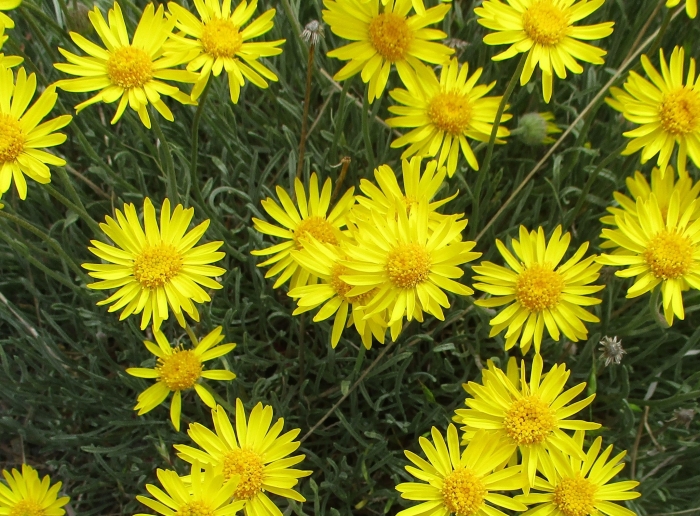Desert Yellow Fleabane
(Erigeron linearis)
Desert Yellow Fleabane (Erigeron linearis)
/
/

sprcrkwild
CC BY 4.0
Image By:
sprcrkwild
Recorded By:
Copyright:
CC BY 4.0
Copyright Notice:
Photo by: sprcrkwild | License Type: CC BY 4.0 | License URL: http://creativecommons.org/licenses/by/4.0/ | Rights Holder: sprcrkwild | Publisher: iNaturalist | Date Created: 2021-05-17T01:44:59-07:00 |

























Estimated Native Range
Summary
Erigeron linearis, commonly known as Desert Yellow Fleabane, is a perennial herb that is native to the arid mountainous regions of western North America, including British Columbia, Wyoming, northern Nevada, and Mono County in California. It is typically found in open, rocky slopes and flats within sagebrush, bitterbrush, or juniper communities. Desert Yellow Fleabane grows to a modest height of up to 8 inches (20 cm) and forms small clumps. Its narrow, pale green leaves are linear and sometimes covered with fine hairs. From late spring to early summer, it produces solitary yellow flower heads that are quite showy, with a center of golden disc florets surrounded by a fringe of yellow ray florets, each up to 0.5 inches (1.3 cm) long.
This plant is valued for its drought tolerance and ability to thrive in poor, rocky soils, making it suitable for rock gardens, xeriscaping, and restoration projects in its native range. It requires minimal maintenance and is adapted to full sun conditions with low water requirements once established. While it is not commonly used in large-scale horticulture, it can provide a splash of color in naturalistic plantings and is a useful addition to pollinator gardens due to its attractive flowers. Potential problems include overwatering, which can lead to root rot in poorly drained soils.CC BY-SA 4.0
This plant is valued for its drought tolerance and ability to thrive in poor, rocky soils, making it suitable for rock gardens, xeriscaping, and restoration projects in its native range. It requires minimal maintenance and is adapted to full sun conditions with low water requirements once established. While it is not commonly used in large-scale horticulture, it can provide a splash of color in naturalistic plantings and is a useful addition to pollinator gardens due to its attractive flowers. Potential problems include overwatering, which can lead to root rot in poorly drained soils.CC BY-SA 4.0
Plant Description
- Plant Type: Herb
- Height: 0.5-1 feet
- Width: 0.5-1 feet
- Growth Rate: Moderate
- Flower Color: White, Yellow
- Flowering Season: Spring, Summer
- Leaf Retention: Deciduous
Growth Requirements
- Sun: Full Sun, Part Shade
- Water: Low, Medium
- Drainage: Fast, Medium
Common Uses
Border Plant, Drought Tolerant, Low Maintenance, Rock Garden
Natural Habitat
Native to arid mountainous regions within sagebrush, bitterbrush, or juniper communities
Other Names
Common Names: Narrowleaf Daisy, Linearleaf Daisy, Linear-Leaved Fleabane, Linear-Leaved Daisy, Desert Yellow Daisy
Scientific Names: , Erigeron linearis, Diplopappus linearis, Erigeron linearis var. linearis, Erigeron luteus, Erigeron peucephyllus, Erigeron yakimensis,
GBIF Accepted Name: